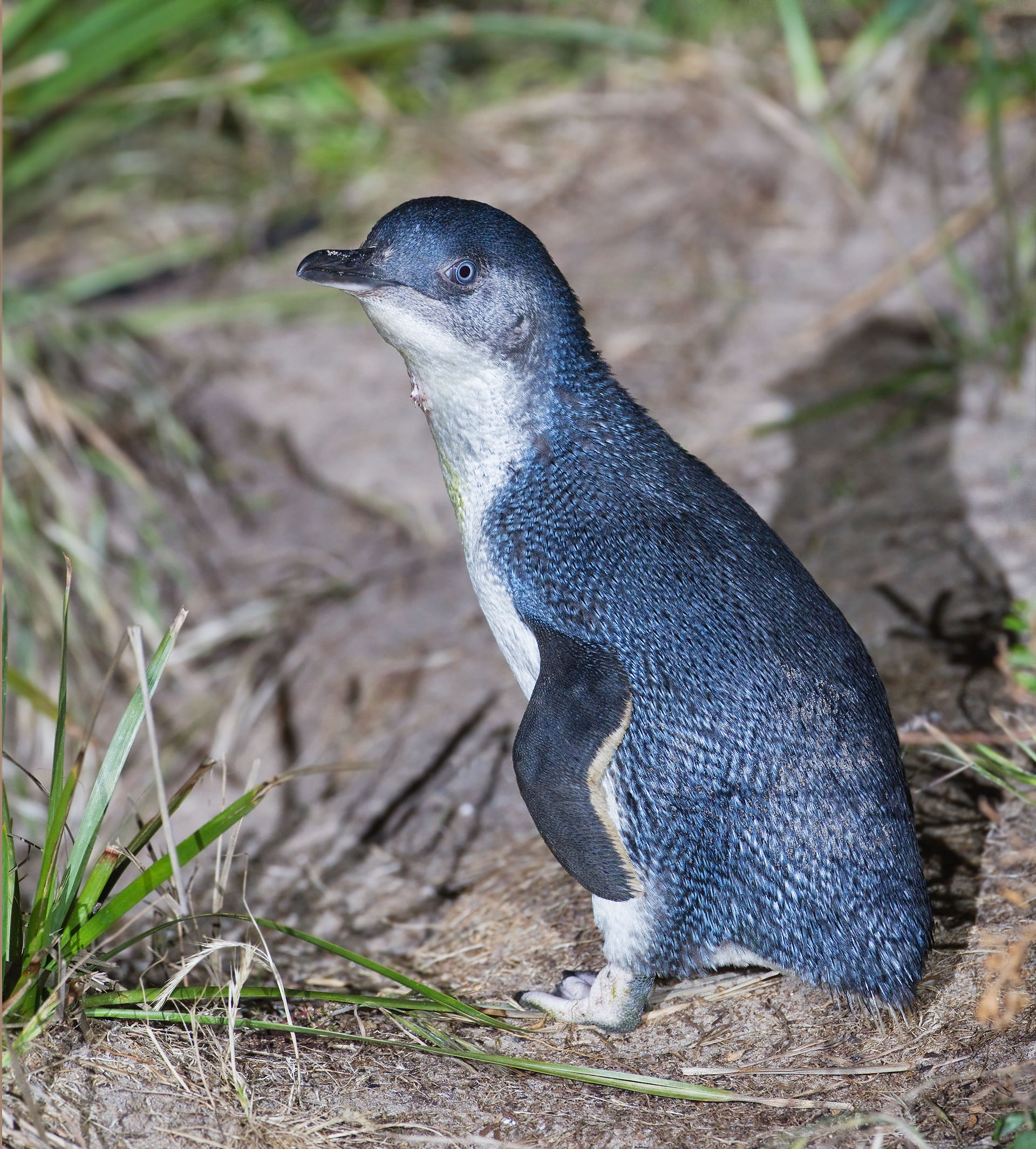
The

Photo by JJ Harrison (https://www.jjharrison.com.au/) – Own work, CC BY-SA 3.0, https://commons.wikimedia.
Little Penguins are fossorial birds, which is to say they nest in burrows, and while they are not currently listed as an endangered species on a global or national level, there are significant concerns about population declines in certain areas of Australia.
Some 90 minutes southeast of Melbourne is Phillip Island, home to the largest Little Penguin colony in the world. Phillip Island Nature Park was created in 1996, and among the attractions offered to the public in the spirit of education (and to generate revenue to support research and conservation) is the Penguin Parade. Visitors can watch the seabirds waddle home from the ocean to their burrows from viewing platforms and boardwalks.
Protective human eyes can’t always be on the Penguins, and there is danger “out there” for these charming birds: Feral cats and fox. Wild cats alone cause the deaths of billions of animals across Australia each year, and on Phillip Island, penguins are easy targets. What to do?
Enter Marbee and Milly.
In 2020, two feral cat detection dogs completed their intensive training were deployed in the field: ‘Marbee,’ a then 18-month-old Border Terrier, and ‘Milly,’ a 15-month-old Jagdterrier. Both were trained specifically to find feral cat scat, track fresh scent trails of cats, and locate their dens.
Prior to the introduction of detection dogs, Phillip Island Nature Park removed an average of 150 feral cats per year using traditional methods like cage traps and spotlighting. One study found that trained dogs accurately detected scats in 55% of searched quadrats making dogs highly efficient at detecting feral cat scats in woodland environments.
Marbee and Milly are helping make a difference because in 2024, the Little Penguins have been having a lot of, um, “carnal activities,” and Phillip Island’s Penguin colony grew to be 40,000 strong. To be fair (and more accurate), the dogs can’t take all the credit. Rising sea temperatures have lead to more fish, and more fish has meant more time and more energy to mate, often with different partners (sometimes four to five partners in one night), and breeding twice a year!
